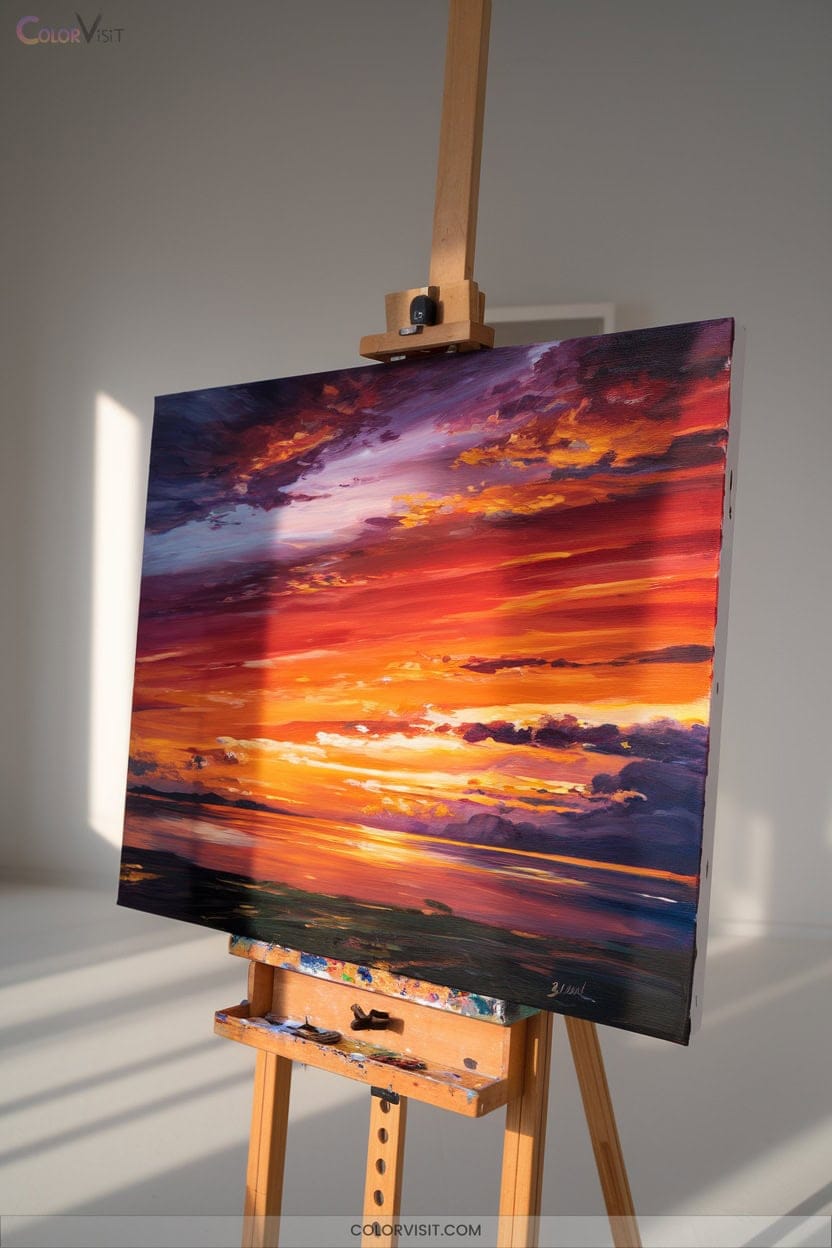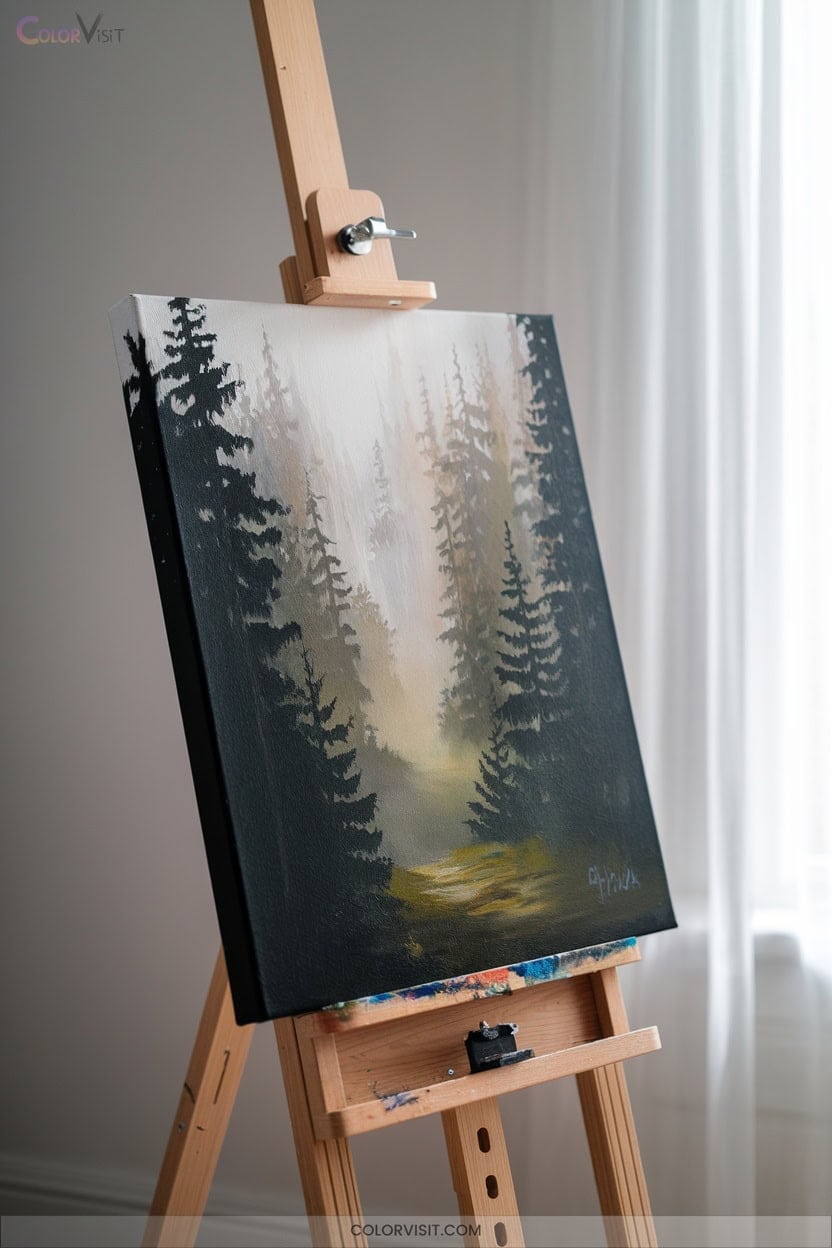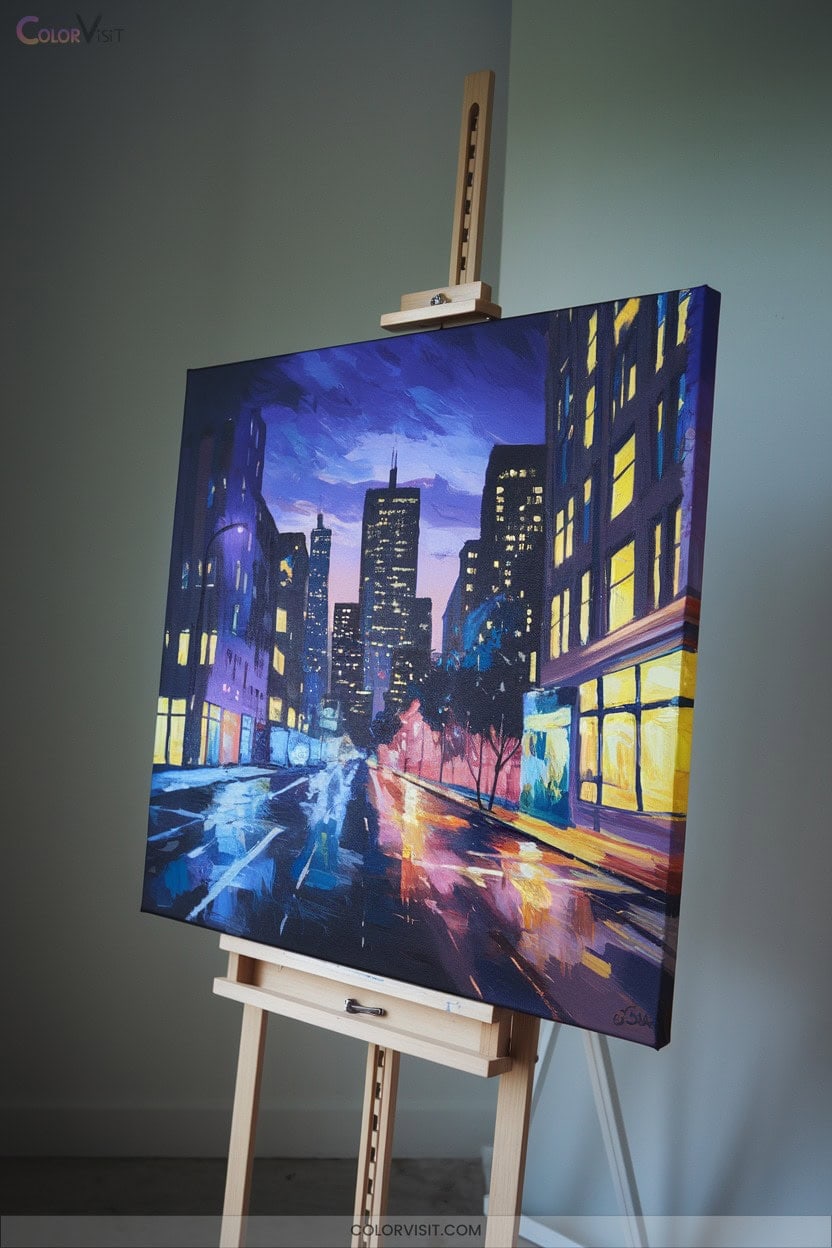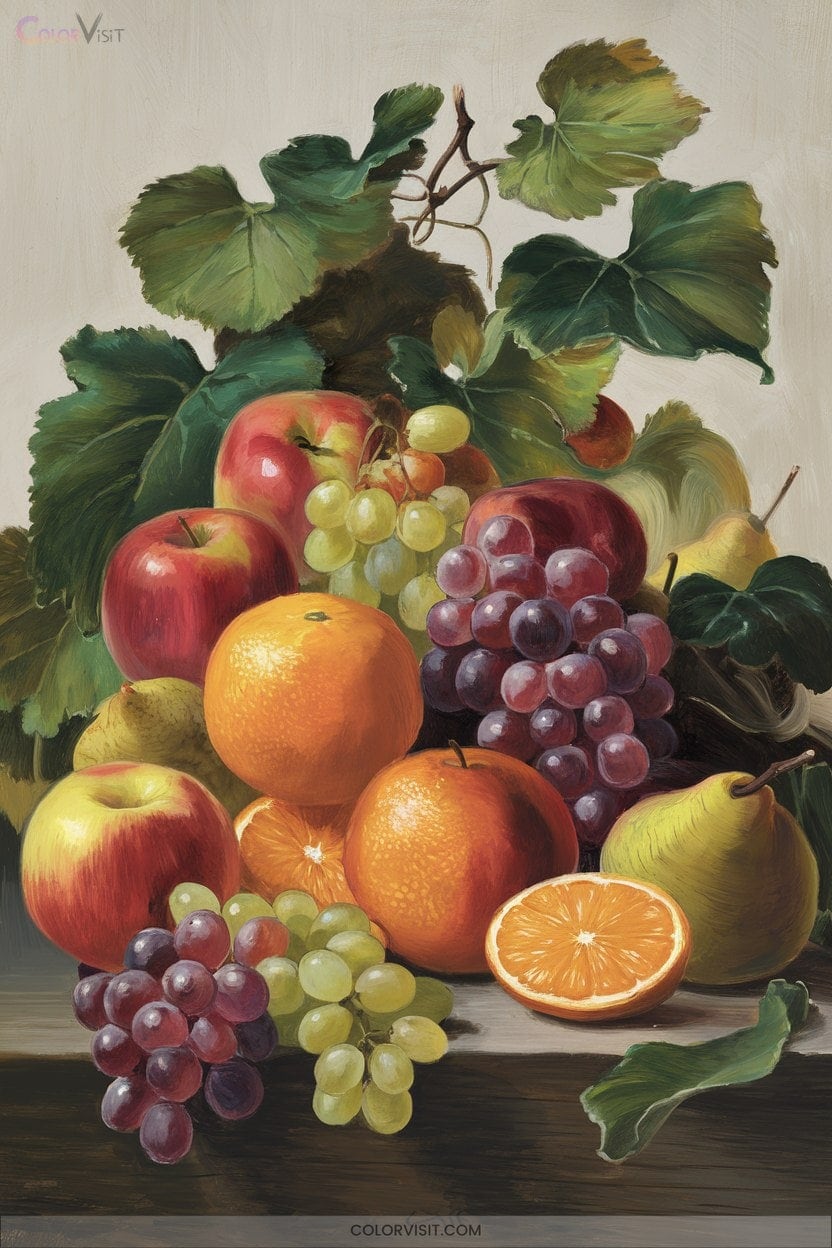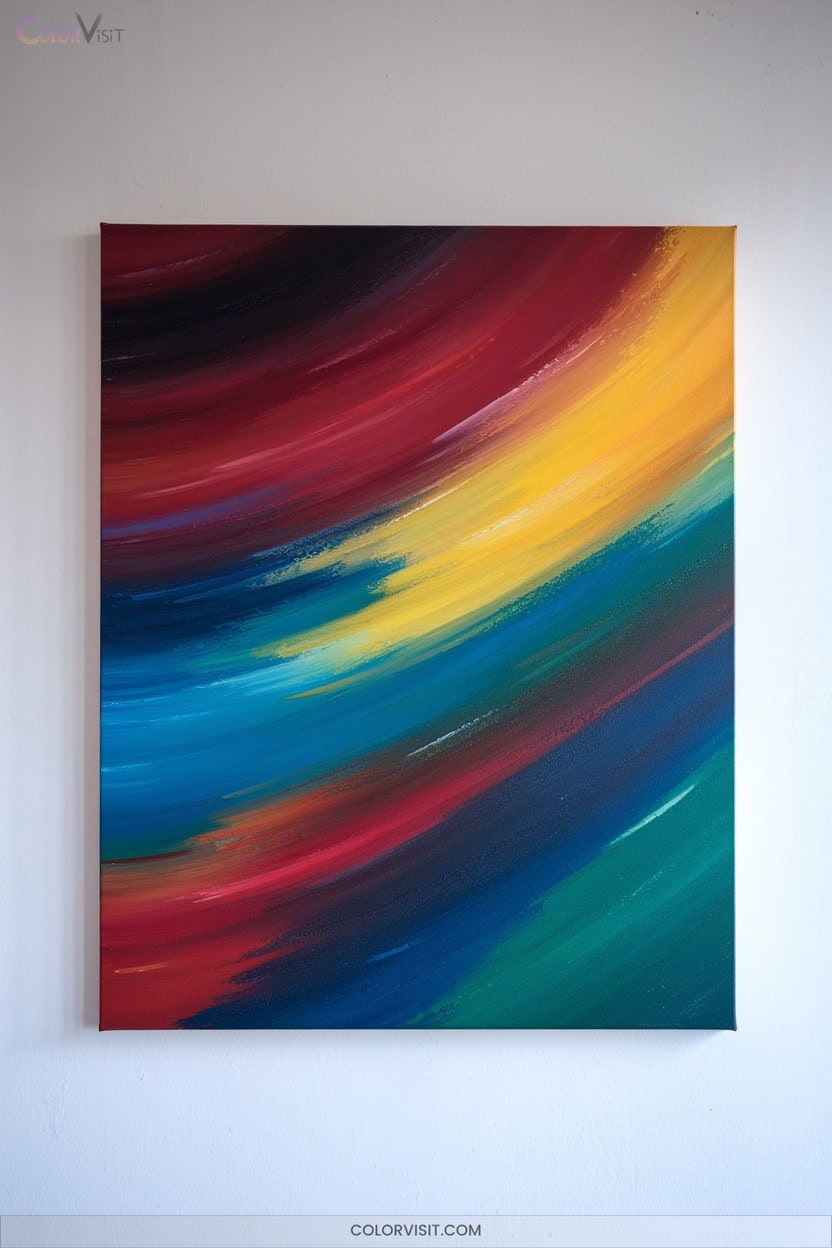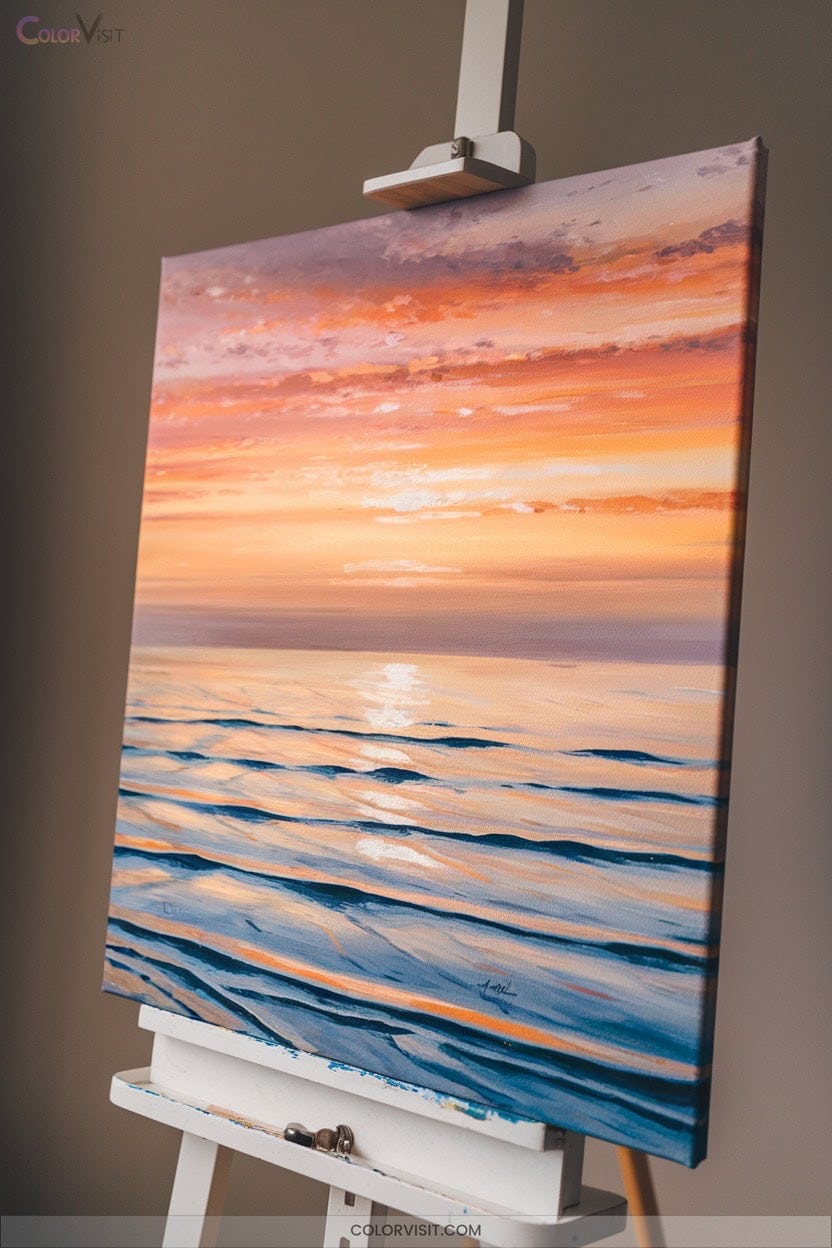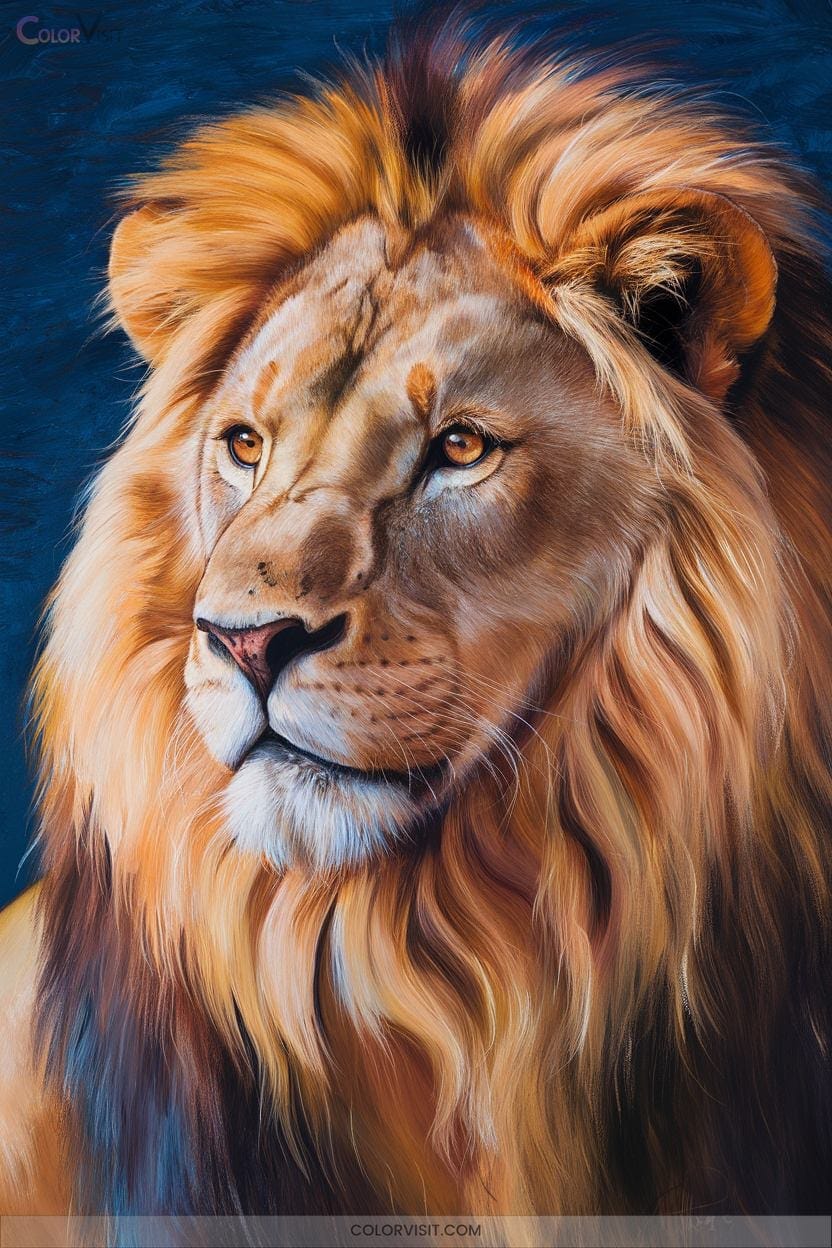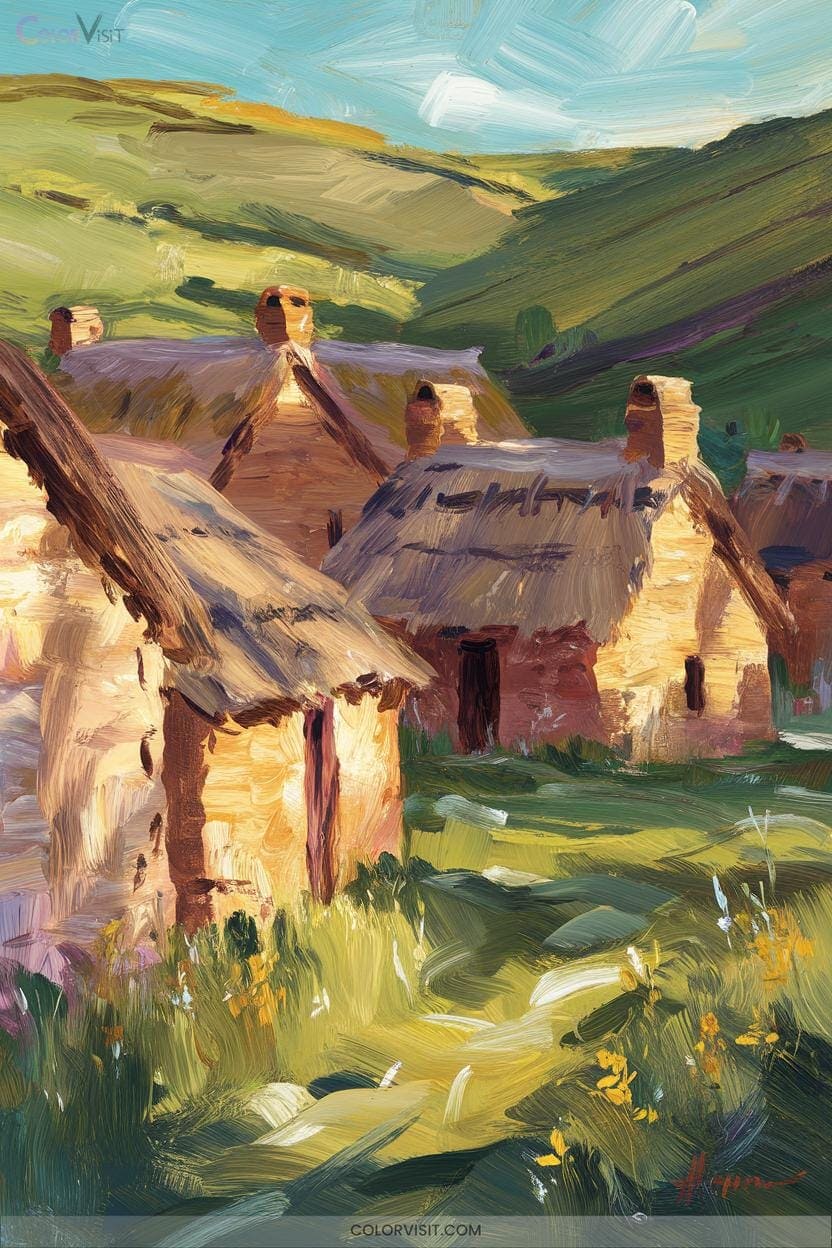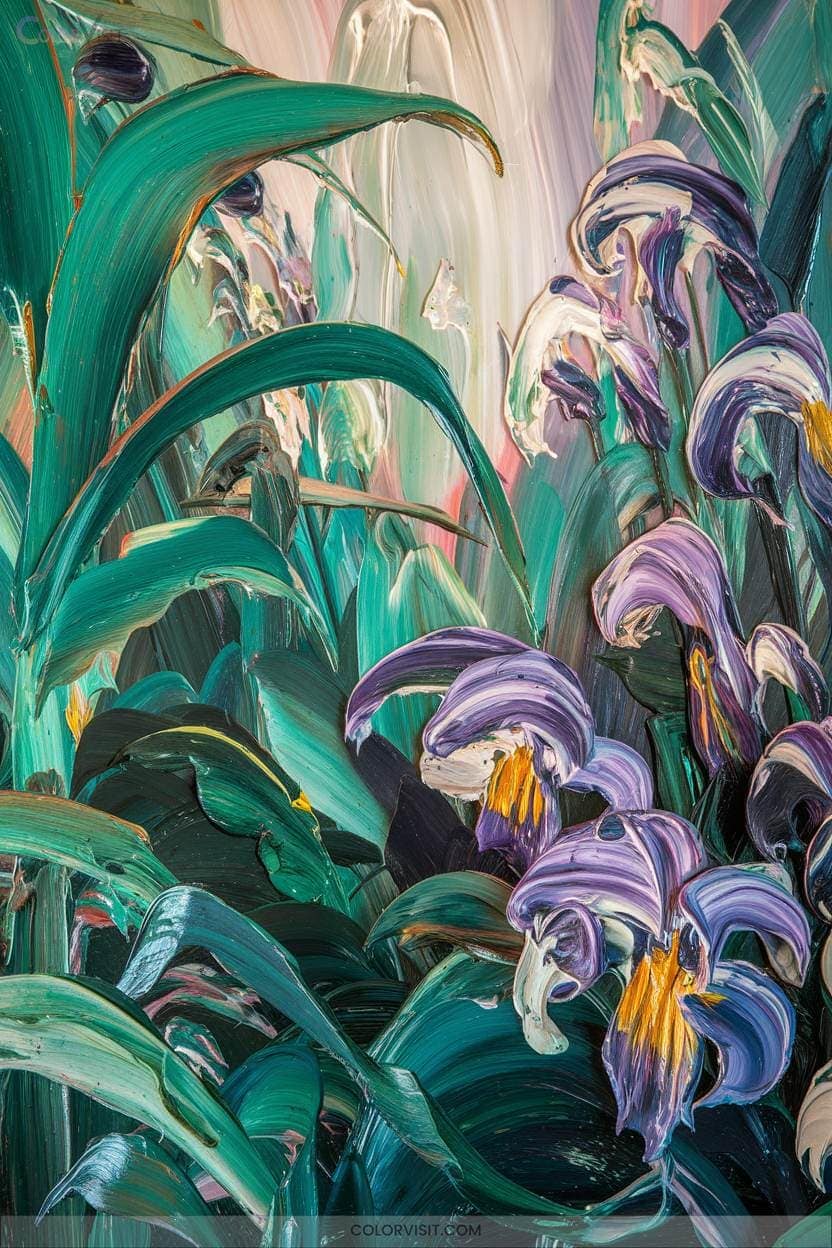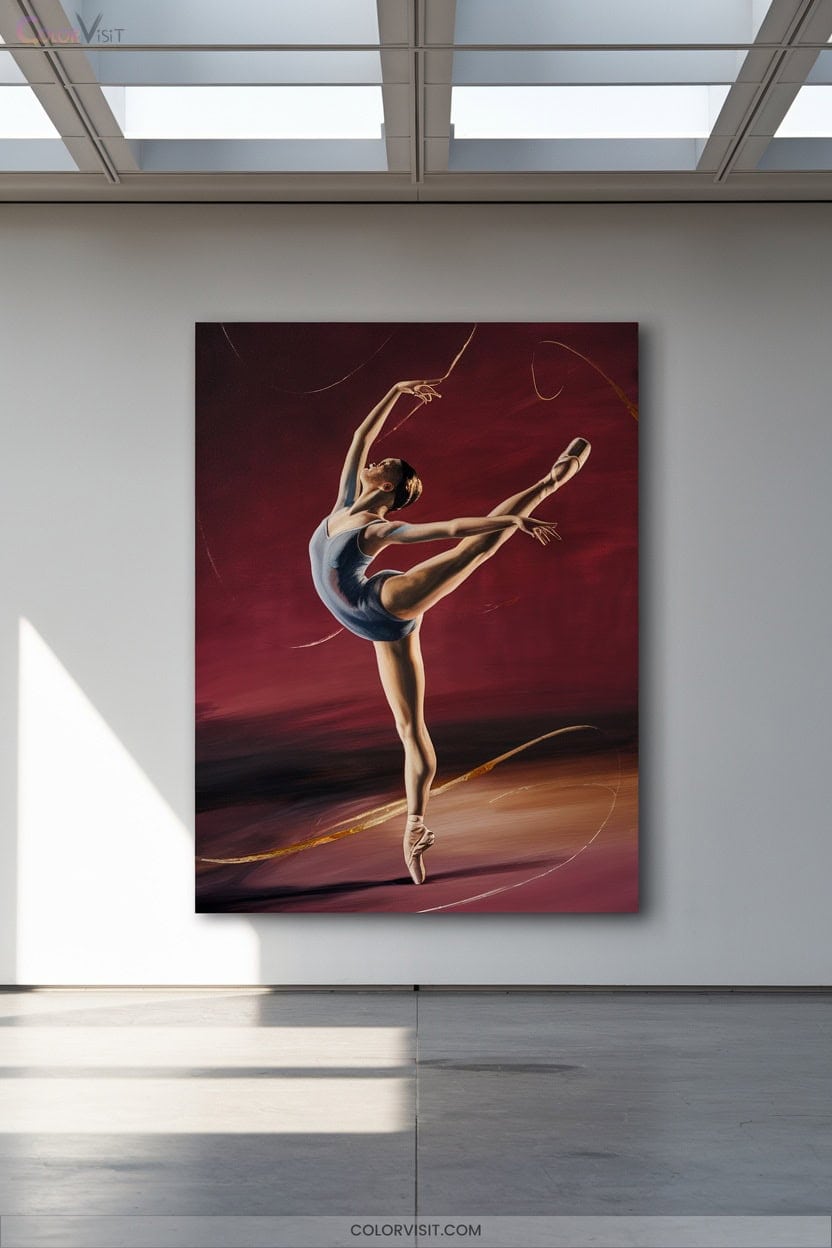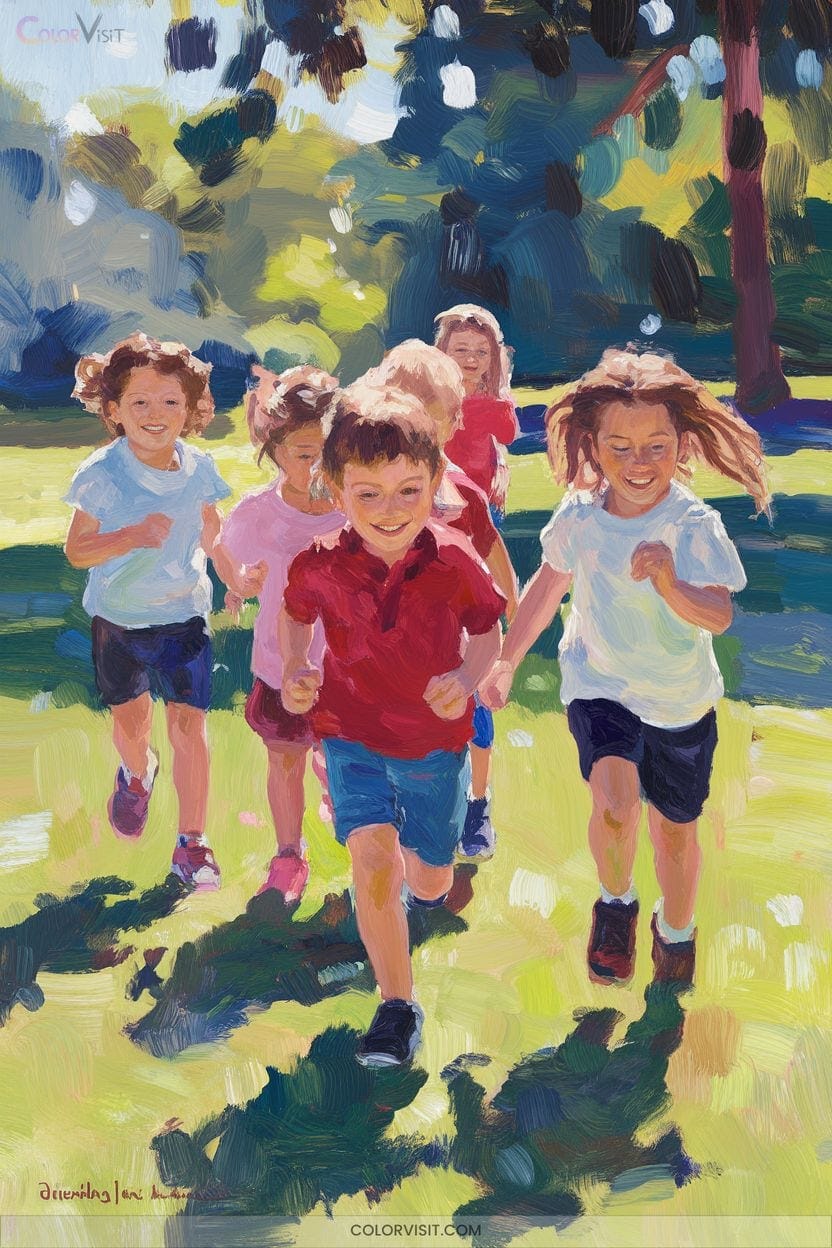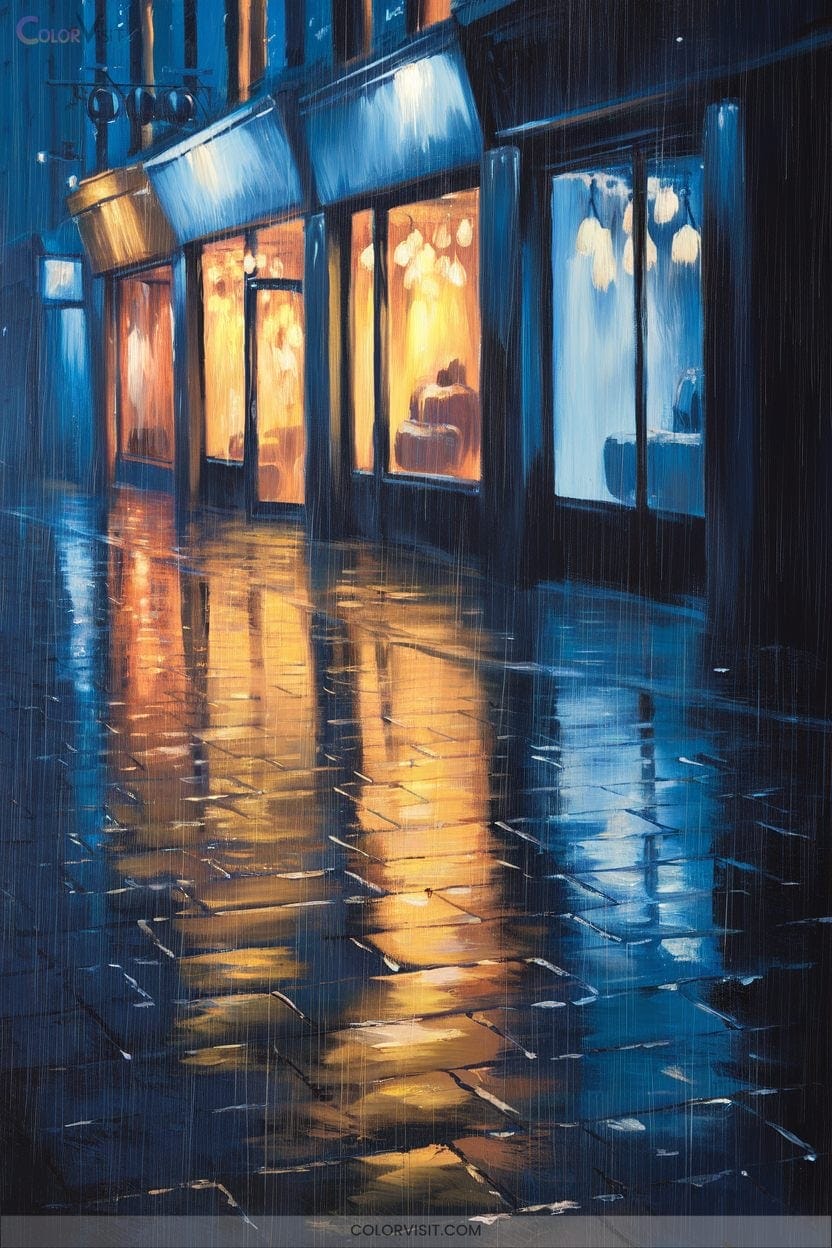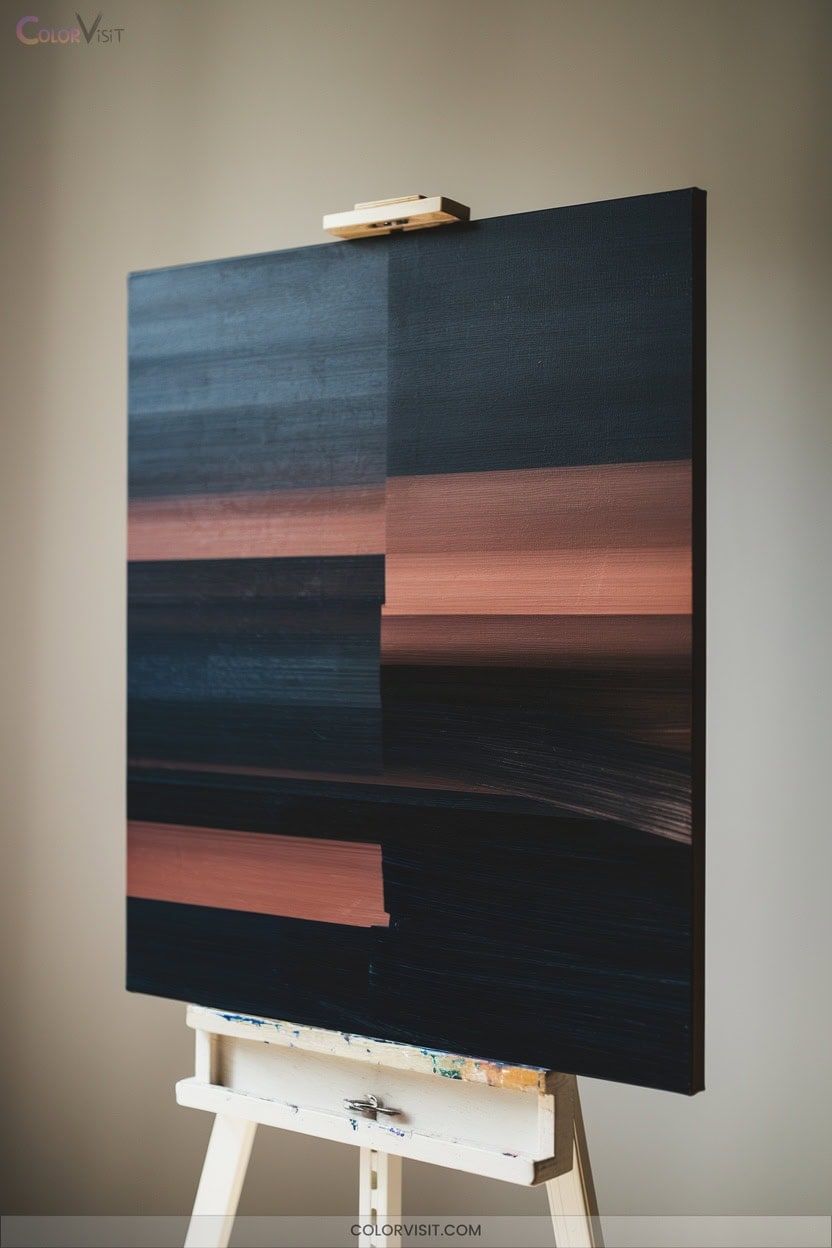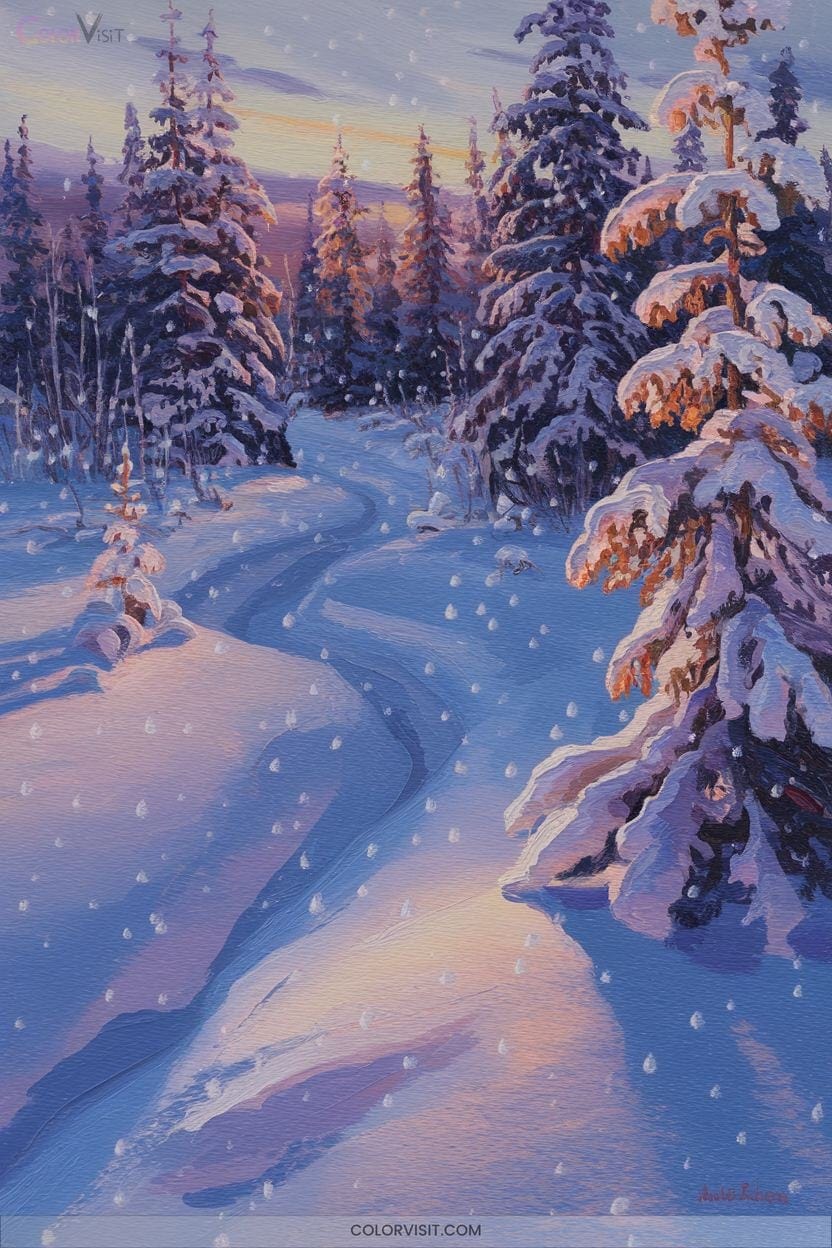18 Stunning Oil Color Painting Ideas for Aspiring Artists
If you’re seeking oil color inspiration, explore sunset vistas inspired by Turner’s radiant skies and Whistler’s atmospheric forests, all with bold impasto and nuanced gradients. Try the Zorn palette’s chromatic discipline in florals, or capture urban nocturnes using incisive brushwork and luminous glazes.
Experiment with alla prima still lifes, minimalist monochrome, or animal portraits channeling Barbizon intensity. You’ll find that these approaches blend art history with technical mastery—and there’s even more innovation waiting just ahead.
1. Captivating Sunset Landscapes
Immerse yourself in the evocative challenge of painting sunset landscapes, where mastery of color, composition, and brushwork converge to depict fleeting atmospheric drama.
Painting sunset landscapes demands a union of color mastery, composition, and brushwork to capture the ephemeral beauty of twilight skies.
Harness cadmium red, yellow ochre, and burnt sienna alongside ultramarine blue and quinacridone magenta for dynamic chromatic interplay.
Modulate gradients from cool cerulean to incandescent vermilion, echoing Turner’s luminous skies.
Assign ample canvas to the sky, anchoring silhouettes against radiant horizons.
Employ expressive, layered brushwork—impasto for textural brilliance, soft blending for seamless blends.
Utilize oil paints with walnut oil or liquin on a gessoed panel for ideal surface response.
Balance tonal values to heighten the sunset’s visual impact.
2. Atmospheric Misty Forest Scenes
Venture into the subtle complexities of atmospheric misty forest scenes, where nuanced manipulation of value, chroma, and edge control defines spatial illusion.
Begin with a diluted underpainting—acrylics dry swiftly, anchoring ethereal depths before translucent oil layers.
Employ a limited palette: gray-blues, muted greens, and titanium white harmonize diffused light, echoing Whistler’s tonalism.
Use fan brushes or quills to scrub soft veils of white, avoiding harsh edges.
Progress from amorphous background shapes to thicker, defined foregrounds, always maintaining wet-on-wet blends.
Restrain detail; let vagueness and implied forms conjure depth.
Balance opacity and transparency through subtle, carefully controlled glazes.
3. Expressive Floral Bouquets
A masterful floral bouquet in oil demands more than mere replication—it’s a study in chromatic nuance, compositional structure, and painterly bravura reminiscent of Fantin-Latour’s lush arrangements.
Embrace limited palettes like the Zorn set to amplify temperature shifts; manipulate earth pigments for grounded warmth and employ alizarin crimson for electrifying pinks.
Exploit alla prima’s immediacy and impasto’s dimensionality, using scrubby brushes to dissolve backgrounds while bright brushes sculpt each leaf.
Innovate with negative space and strategic artificial lighting to stabilize values and accentuate movement.
Consider these advanced tactics:
- Tonalist underlayers for radiant chroma
- Palette knife abstraction exercises
- Turquoise-accented backgrounds for modern contrast
4. Luminous Cityscapes at Night
Illuminate the urban nightscape with deft contrasts and layered luminosity, echoing the chromatic drama of Whistler’s Nocturnes or the cinematic geometry of Leonid Afremov.
Manipulate deep Payne’s Gray shadows against Titanium White and Cadmium Yellow highlights to simulate electric glow.
Glaze transparent Earth Red over wet underlayers, capturing reflections on glass and rain-soaked streets.
Employ impasto for neon signage, integrating cold wax for sculptural, diffused textures.
Use mahl sticks for linear precision, rigger brushes for fine details, and silicone scrapers for dynamic, accidental effects.
Sequence warm-cool palette shifts, emphasize vanishing points, and harness negative space to achieve atmospheric, kinetic cityscapes.
5. Classic Still Life With Fruit
Balance and harmony anchor the classic still life with fruit, where earth tones and prismatic hues interplay to evoke both naturalism and vibrancy.
Balance and harmony define the fruit still life, blending earthy and prismatic colors to capture both realism and vibrant energy.
You’ll orchestrate objects using Renaissance-inspired perspective, playing with symmetry or dynamic asymmetry to guide the viewer’s gaze.
Channel Dutch Masters’ realism or Jane Piper’s prismatic modernism as you layer and glaze, deepening color and luminosity while capturing the fruit’s tactile essence.
- Soft natural lighting reveals subtle chromatic shifts in grapes, pears, and citrus.
- Leaves, stems, or reflective vessels add narrative complexity and textural intrigue.
- Blocking, dry brushing, and wash techniques build dimensionality and chromatic saturation.
6. Dramatic Mountain Vistas
Jagged peaks carve into the sky, demanding mastery of value structure, brushwork, and color nuance to capture their monumental presence in oil.
Begin by blocking in major mountain forms with large flats or filberts, directly referencing the Barbizon School’s bold underpainting.
Anchor your composition using dark values in shadowed crevices, then modulate cool Prussian Blue shadows against warm, sunlit planes for heightened drama.
Employ terminal shadows to articulate dimensionality, using a bright brush for crisp, textural detail.
Layer titanium white to suggest atmospheric mist, and manipulate brush pressure for blends between sharp ridges and soft, receding slopes—innovation thrives in these contrasts.
7. Vibrant Abstract Color Fields
While mountain vistas challenge you to orchestrate light and form, vibrant abstract color fields demand a shift in focus to the psychology and physicality of pure color.
Channel the legacy of Rothko and Newman by manipulating large expanses of pigment—eschew gesture for the meditative impact of saturated hues.
Embrace vast fields of color, setting aside gesture to invite viewers into contemplative encounters with pure, saturated hues.
To innovate within this genre, experiment with:
- Pouring oil and acrylic mixtures for atmospheric blending and serendipitous chemical textures
- Layering high-chroma primaries with titanium white and mars black to induce optical dynamism
- Configuring bold geometric or amorphous zones that evoke emotion through visual tension
Let color become your primary subject and expressive tool.
8. Serene Seascapes With Reflections
A mastery of serene seascapes with reflections demands acute sensitivity to atmospheric effects and a nuanced understanding of oil painting’s chromatic potential.
You’ll capture liminal light—dawn’s blush or sunset’s warmth—by modulating chroma and value, echoing Impressionist innovations.
Employ gentle gradations in muted blues and greens to evoke tranquility, as seen in Naomi Jenkin’s early morning coastlines.
Precisely render water’s reflective symmetry, integrating coastal forms and cloud mirroring for visual intrigue.
Manipulate horizon placement to orchestrate compositional balance.
Smooth brushwork and deliberate negative space foster expansiveness, while color harmony between sky and water achieves that elusive serenity reminiscent of Afremov’s emotive oeuvre.
9. Portraits With Bold Brushwork
Ignite your portrait practice by channeling the fearless energy of bold brushwork, where every mark asserts intention and character.
Channel fearless brushwork in your portraits, letting each stroke radiate bold intention and expressive character.
Embrace German Expressionist influences—think Kirchner’s audacious hues and Van Gogh’s kinetic impasto—by wielding thick, unblended paint, exploiting the tactile potential of every stroke.
Vary pressure, grip, and brush orientation to achieve dynamic surfaces and emotive contrasts.
Prioritize chromatic exaggeration and abrupt color juxtapositions over naturalism, letting gesture define form.
Visualize your next canvas:
- Vibrant, non-representational color planes unify figure and ground.
- Assertive, directional strokes communicate psychological depth.
- Texture-rich impasto projects energy and immediacy.
10. Majestic Animal Studies
The sinew of a moose’s neck, the luminous patchwork of a giraffe’s coat—majestic animal studies invite you to synthesize anatomical precision and expressive mark-making.
Begin by blocking in forms, grounding proportion with gestural lines reminiscent of Delacroix’s dynamism.
Layer warm burnt sienna and cool ultramarine, building dimensionality through transparent glazes and impasto highlights.
Capture pelage or hide with varied brushwork, alternating filbert and rigger for tactile realism.
Observe the interplay of light and shadow to model musculature, using chromatic contrast for vibrancy.
Harmonize environment and subject, strategically employing color temperature shifts to foreground your animal, echoing the innovation of nineteenth-century animalier painters.
11. Dreamy Sky Studies
While animal studies challenge your grasp of anatomical form, sky painting calls for mastery over atmosphere and optical nuance.
To render dreamy skies in oil, employ seamless blending and layered glazes; these techniques create the ethereal luminosity reminiscent of Constable and Turner.
Limit your palette—Payne’s grey, ultramarine, titanium white, and touches of raw sienna—to maintain softness and evoke transient light phenomena.
Precision in brushstroke direction and subtle highlights guarantees realistic movement and glow.
- Delicately shift sky tones with soft, controlled blending
- Layer translucent glazes for cloud depth and radiance
- Accentuate cloud edges with pale yellow to replicate light diffusion
12. Rustic Countryside Cottages
A moss-draped chimney punctuates the silhouette of a countryside cottage, inviting you to explore the interplay between vernacular architecture and painterly texture.
Capture asymmetrical massing and low-pitched gable roofs with deft brushwork, referencing Arts and Crafts influences.
Render stone or brick exteriors with tactile impasto, while defining arched doorways and bay windows with subtle sfumato.
Highlight exposed beams and weathered wood accents, juxtaposing organic materials and built-in nooks for visual rhythm.
Employ chiaroscuro to evoke cozy interiors, layering warm ochres and umbers for ambiance.
Integrate vintage motifs and dimly-lit corners, synthesizing nostalgia and innovation within your oil color compositions.
13. Textured Impasto Gardens
Moving beyond the intimate architecture of rustic cottages, immerse your practice in the dynamic tactility of impasto garden scenes.
Harness palette knives and stiff-bristle brushes to sculpt undiluted pigment into botanical forms, echoing Van Gogh’s chromatic audacity and sgraffito techniques.
Employ temperature contrasts—cadmium reds against ultramarine shadows—while accentuating focal zones with thick, light-modelling paste.
For maximal visual impact, orchestrate the following:
- Chunk broken oil pastels into wet paint for unpredictable, tactile flora.
- Layer opaque impasto over transparent glazes, invoking luminous depth.
- Integrate negative space, offsetting sculptural blooms with minimal, thinly-painted backgrounds.
14. Elegant Figurative Poses
Channel the expressive lineage of figurative oil painting by orchestrating elegant poses that capture both anatomical precision and psychological nuance.
Study the dynamic articulation in Elena Bond’s Impressionist dancers, where gestural brushwork fuses movement with emotion.
Experiment with the ethereal abstraction of Stanka Kordic by softening edges and layering translucent hues, blurring the boundary between form and atmosphere.
Incorporate hyper-realistic detailing à la Rob Hefferan for heightened corporeal presence, or explore innovative compositional balance by emphasizing feminine themes and emotive portraiture.
Through these advanced strategies, you’ll invigorate classical figuration with contemporary verve, cultivating both technical mastery and conceptual depth.
15. Playful Children at Play
How do you distill the essence of childhood energy into oil paint?
Begin with thumbnail sketches to architect your composition, using geometric schemata reminiscent of Cézanne’s analytical approach.
Capture dynamic, kinetic poses—arms flung, legs in mid-leap—to evoke movement.
Leverage wet-on-wet technique for immediacy, layering saturated color to preserve luminosity and vibrancy.
Consider these possibilities:
- Children darting through dappled sunlight in a verdant park
- Expressive faces lit with laughter, rendered in broad, gestural strokes
- Windswept hair and tossed toys, articulated with rhythmic brushwork
Balance background elements to accentuate, not distract from, spirited focal figures.
16. Glowing Street Scenes in Rain
Illuminate nocturnal cityscapes by harnessing the unique alchemy of light and rain—a motif favored by Impressionists like Caillebotte and contemporary urban realists alike.
Employ atmospheric perspective by fading chromatic intensity into mist-laden backgrounds, then enrich the scene with layered glazes for luminous neon reflections and incandescent street lanterns.
Balance chiaroscuro with precise brushwork to amplify wet-on-wet blends, capturing dynamic interplay between light and shadow.
Direct the viewer’s gaze using leading lines and vertical compositions, framing glowing features through archways or puddle reflections.
For heightened realism, integrate raindrop textures, subtle iridescence, and blurred figures, evoking the city’s kinetic energy.
17. Minimalist Monochromatic Compositions
After exploring the vibrant interplay of color in rain-soaked cityscapes, consider the disciplined restraint of minimalist monochromatic compositions.
By limiting your palette—perhaps to ultramarine blue or raw umber—you’ll channel the spirit of Whistler’s tonal harmonies and Morandi’s subtle gradients.
Focus on value structure, layering transparent glazes, and exploiting negative space to distill your subject to its essence.
Employ advanced techniques such as dry brushing for texture and blocking-in to establish compositional clarity.
Visualize your next canvas:
- Ultramarine blue gradients evoking atmospheric depth
- Expressive brushwork accentuating form over color
- Stark contrasts sculpting luminous, focused compositions
18. Enchanting Winter Snow Scenes
Capture the crystalline stillness of winter by orchestrating cool hues and textural contrasts, channeling the atmospheric mastery of Isaac Levitan and the nuanced luminosity of Claude Monet’s snow studies.
You’ll manipulate titanium white for sculpting snowdrifts, while ultramarine blue and quinacridone red infuse shadow and twilight vibrancy.
Employ wet-on-wet blending and soft brushwork to mimic ephemeral snowfall, building impasto layers for tactile realism.
Integrate cadmium yellow and red to animate sunlit or sunset snow—contrasting serene monochromes with bursts of warmth.
Innovate compositions by juxtaposing moonlit forests, icy lakes, or bustling urban snowscapes, ensuring each brushstroke captures winter’s transformative magic.
Frequently Asked Questions
How Do I Safely Clean and Store My Oil Painting Brushes?
Clean your oil brushes by removing excess pigment, then sequentially immersing in solvent and conditioning with mild soap. Reshape bristles, dry horizontally or bristle-down, and store upright—emulating atelier protocols to preserve brush integrity and promote innovative mark-making.
What Primers Are Best for Preparing Different Painting Surfaces?
Don’t worry about losing surface character—you can use clear acrylic primers for wood or canvas to preserve texture, or traditional oil-based gesso for superior adhesion, echoing Renaissance techniques. Innovate with specialty primers for aluminum or MDF panels.
How Can I Avoid Cracking in My Finished Oil Paintings?
To prevent cracking, you’ll rigorously implement “fat over lean” stratification, select archival supports, apply professional gesso, and regulate environmental conditions—mirroring Old Master practices while integrating contemporary mediums like alkyds to optimize flexibility and structural integrity.
Which Oil Painting Mediums Affect Drying Time and Finish?
You’ll impact drying time and finish by choosing alkyds for rapid polymerization or walnut, poppy, and safflower oils for protracted open time. Employ impasto gels for texture, or dammar and Liquin for luminous, Old Masters-inspired gloss.
How Do I Dispose of Oil Paint Solvents Responsibly?
You’ll decant settled solvents for reuse, then deliver remaining residues to hazardous waste facilities, citing precedents from postwar atelier protocols. Never pour them down drains—use metal containers, ventilate areas, and rigorously follow local environmental compliance for avant-garde stewardship.
Conclusion
As you pick up your brushes, remember that oil painting has captivated artists since the Renaissance, with nearly 70% of the world’s most valuable paintings created in oils. When you experiment with chiaroscuro, impasto, or sfumato, you’re joining a lineage from Rembrandt to Richter.
Let these 18 ideas spark your creativity, and don’t hesitate to reinterpret tradition—because the evolution of oil painting rests in your hands, brushstroke by brushstroke.


